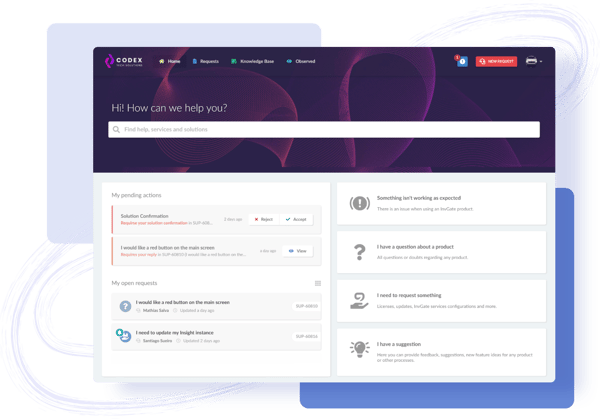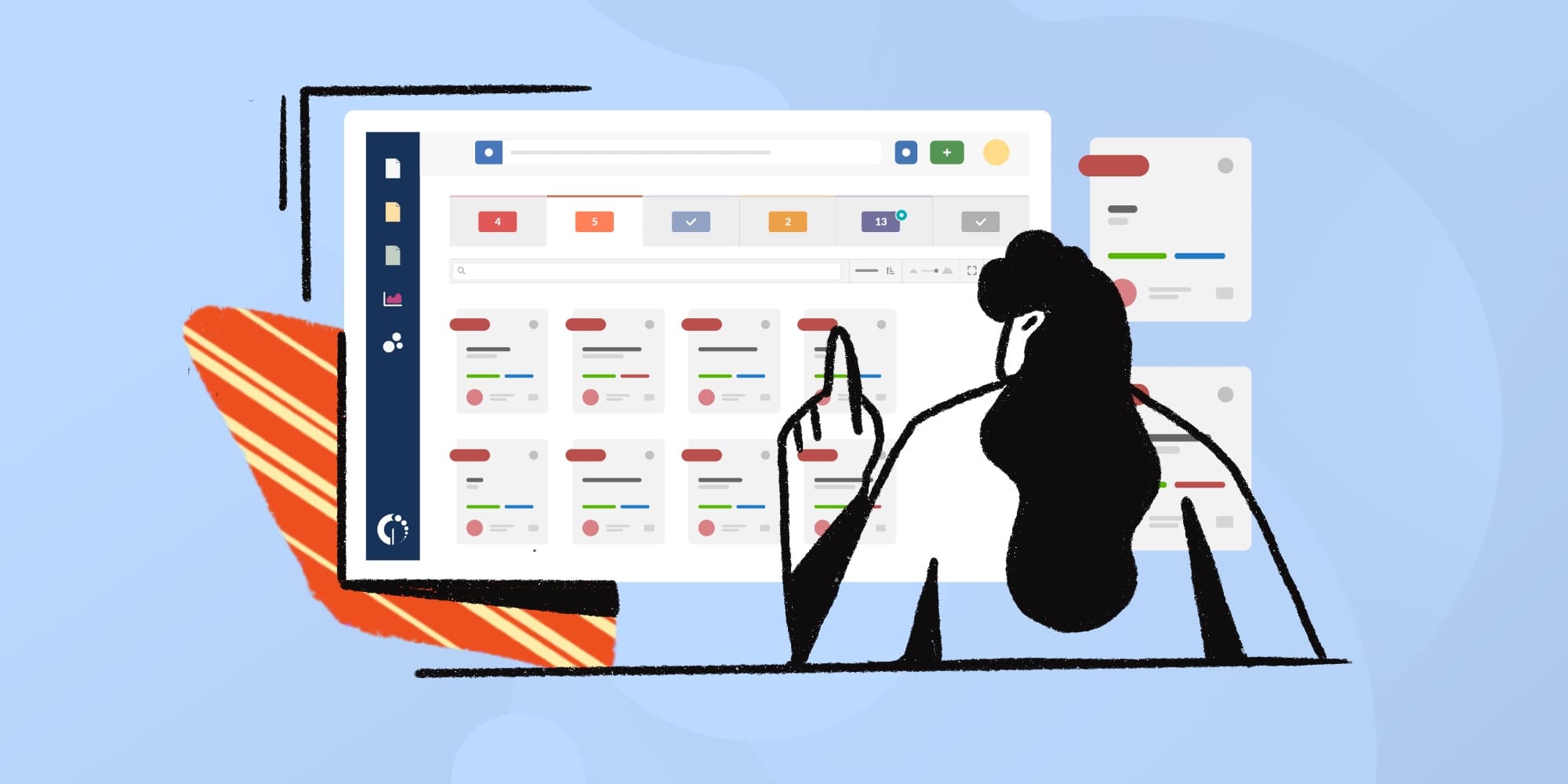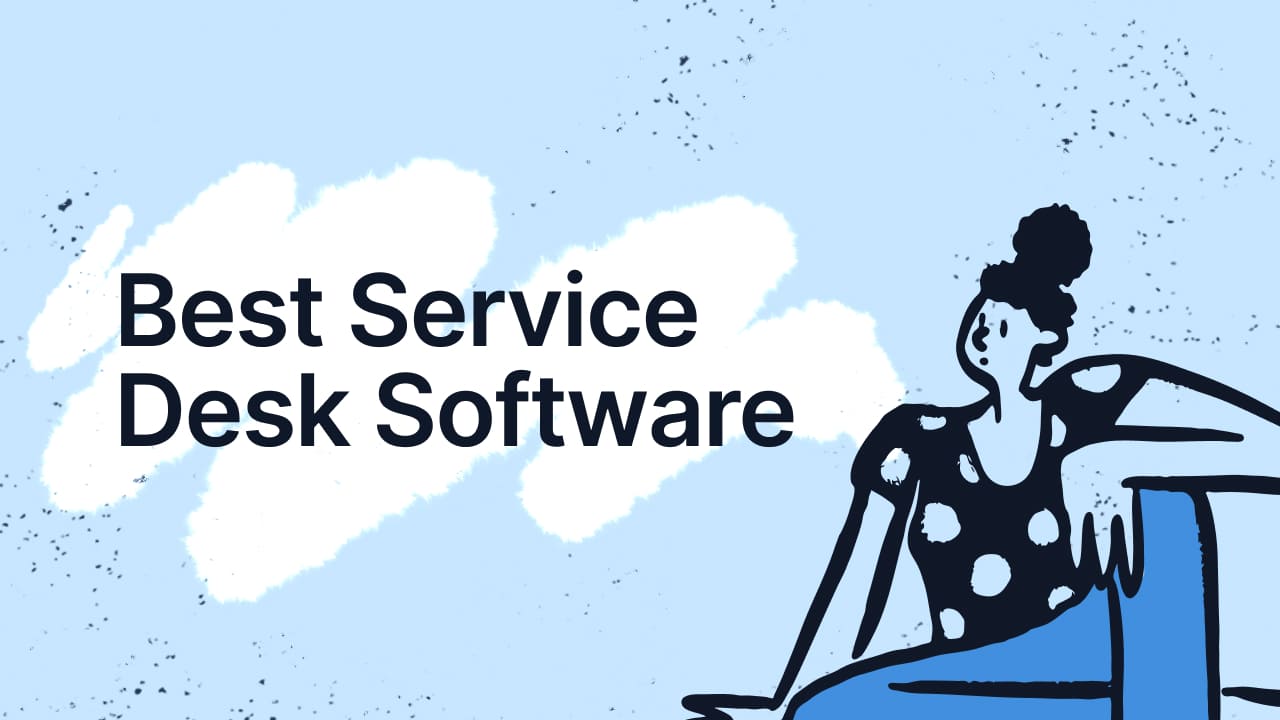The terms help desk and service desk are often used interchangeably, but are they really the same thing? If you're considering purchasing new software for IT support, you might want to give this some thought to choose the tool that best fits your needs.
To start with, as with many things in the world of IT, there are no specific rules that vendors must follow when naming their software. This means that we can easily find products that provide similar functionality under different names. So, while the name may give you a point of reference, it is necessary to look deeper and consider each person's purpose and use case to understand the key differences.
While the scope of each has been established to an extent through the ITIL framework, it doesn’t provide much practical advice on the differences and how to identify each one.
That's why we decided to oppose help desk vs. service desk to give you a thorough picture of their differences. Keep reading to find out!
Help desk vs. service desk - Definitions
Let's start with some definitions to distinguish between two frequently confused terms: help desk and service desk. While they share similarities and are usually used as synonyms, their purpose and scope differ significantly.
What is a help desk?
In simple terms, a help desk allows the IT department to respond to unexpected issues within IT infrastructure or the services they provide.
A help desk is reactionary, and is used to manage problems when they arise, allowing for them to be logged, tracked, and (hopefully) finally resolved. A help desk tool will focus on facilitating the communication between support staff and end users to help solve problems, and its purpose is to keep things running on a day to day basis.
A help desk is a tool or team focused on resolving immediate technical issues, such as system crashes, password resets, or software malfunctions.
Key characteristics of a help desk:
- Incident Management: Logging, tracking, and resolving technical issues.
- Ticketing: Prioritizing and organizing user requests.
- Basic support: Focused primarily on IT support and troubleshooting.
For example, a small business might use a help desk to manage IT issues reported by employees, ensuring rapid response to minimize disruptions.

What is a service desk?
A service desk can be thought of as a strategic big brother of the help desk. It can do everything the help desk does, but it also allows you to plan, structure, and provide the delivery of a wide variety of IT services.
Instead of merely reacting to problems as they arise, service desks focus on a more strategic approach to IT Service Management. They allow organizations to handle the complete service lifecycle while acting as a single point of contact (SPOC) for all IT activities.
Typical service desk software includes elements such as a service catalog, which formalizes the processes and resources required to deliver a particular service and allows them to be requested either by an end user or internal customers such as members of the IT department.
Key characteristics of a service desk:
- Service Management: Includes incident, problem, change, and asset management.
- Proactive approach: Focuses on preventing issues and improving processes.
- Comprehensive scope: Encompasses IT services and business needs.
In a service desk environment, communication is handled between end users and IT and internal IT communication.
A service desk may also include an expanded scope, and allow for the provision of support services for an entire organization. Also known as Enterprise Service Management, it allows the service desk to expand to areas like Human Resources, Facilities, Accounting, or Legal departments. Other activities may also be included within its scope, such as managing and controlling change in business processes or infrastructure (Change Management).
What’s the Difference Between a Help Desk and a Service Desk?

The key difference lies in their scope and focus. Help desks are narrower in function and centered around resolving user issues and requests. Service desks, on the other hand, encompass a broader range of IT Service Management practices, making them suitable for organizations that require integration with business processes and ITIL frameworks.
That said, modern service desk software often includes help desk functionalities, allowing organizations to manage multiple help desks while adhering to comprehensive Service Management practices.
To sum it up, we can say that the main difference between a help desk and a service desk lies in the strategy.
While help desk tools are reactive — meaning that they act once an issue has occurred —service desk software allows organizations to set up a strategy and widen the scope to prepare for issues long before they arise.

What is a ticketing system (or an issue-tracking system) and how is it different?
Now, we get into a grey area. Occasionally, these terms are used to describe software that has similar functionality to a help desk tool (service request fulfillment), but typically, these solutions have been re-purposed, and their core functionality is “bug tracking” or project management for software development.
Ticketing systems (or issue-tracking systems) can be used to log, track, and resolve issues reported by end users. However, being more general in scope, they typically are not the best suited solution to run a dedicated help desk or service desk.
Their lack of a fluid interface, reporting, and additional features for Knowledge Management, tracking Service Level Agreements (SLAs), or automating workflows makes them less capable than a dedicated help desk or service desk support platform. They are ultimately less efficient and harder to modify and maintain.
![]()
Benefits of help desks and service desks
Investing in a robust help desk or service desk solution brings several advantages to organizations. These tools streamline support operations, improve efficiency, and enhance the user experience.
Key benefits of a help desk
- Improved response times: By centralizing user requests, help desks make it easier to prioritize and address issues quickly.
- Increased productivity: With less downtime, employees can focus on their work instead of troubleshooting IT problems.
- Cost savings: Efficient problem resolution reduces the need for larger IT teams and minimizes operational disruptions.
- Better user satisfaction: Quick and effective support fosters trust and confidence among employees.

Key benefits of a service desk
- Holistic support: Service desks manage both IT and non-IT services, providing end-to-end support for business processes.
- Proactive Problem Management: By identifying and addressing root causes, service desks prevent recurring issues.
- Alignment with business goals: Service desks help organizations achieve objectives by improving service delivery and management.
- Scalability: A well-implemented service desk can grow alongside your organization’s needs.
For example, an IT service desk can help a growing company onboard new employees more efficiently by managing hardware allocation, software access, and training resources in one integrated platform.
Features to look for in help desk and service desk tools
Choosing the right remote help desk or service desk software can make a significant difference in your IT support operations. Look for features that align with your organization’s needs and ensure the software can scale with your business.
Must-have features for help desk software
Of course, your help desk will include a ticketing system for managing service requests, tracking their progress, and prioritizing based on urgency. But let's review some of the other features you'll need in a help desk solution:
- Knowledge Base: A self-service portal where users can access FAQs, guides, and solutions to common issues, reducing the load on support teams.
- Automation: To streamline repetitive tasks, such as ticket assignment or status updates, saving time and reducing errors.
- Remote support tools: Features like screen sharing and remote desktop access (or integrations with these tools) to diagnose and resolve issues without being physically present.
- Reporting and analytics: Insights into key metrics, such as response times and ticket volumes, to help identify areas for improvement.

Must-have features for service desk software
These are the features you need in a platform to boost your service desk operations:
- ITIL certifications: Support for ITIL practices like incident, problem, change, and Asset Management ensures comprehensive service delivery.
- Service catalog: A detailed list of available services, helping users understand what support options are available and how to request them.
- Workflow automation: Customizable workflows that streamline processes such as onboarding, change requests, or hardware procurement.
- Integration capabilities: Compatibility with other business tools, such as HR systems, project management platforms, and CRM software, ensures seamless operations.
Final thoughts
As you can see, both help desks and service desks share functionalities — such as improving communications, organizing IT support, and managing issues related to the IT infrastructure and its services. However, if we look past the surface and dig a bit deeper, we start to see what sets them apart.
If you’re wondering whether you need a help desk or a service desk, think about this: even if your business isn’t a traditional service provider, every organization relies on internal or external support to keep operations running smoothly.
A help desk can address immediate IT issues, while a service desk takes a broader approach, integrating IT processes with business goals. In many cases, a robust service desk can oversee multiple help desks, giving you the flexibility to manage both routine technical support and strategic services.
Discover how InvGate Service Management can streamline your operations and enhance customer satisfaction. Start your free trial today!
















